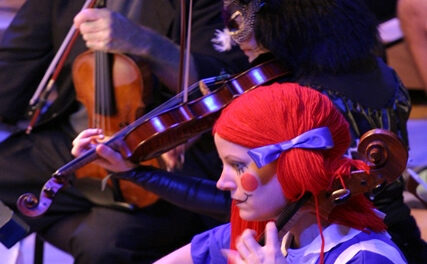The Durham Symphony doesn’t mess around when it picks its annual young artists competition winners. Nope, this orchestra brings its “discoveries” front and center, featuring them in regular subscription concerts. This is of course as it should be, for some of the young artists who are selected in this process will surely grow up to be among our master artists of the future.
On the evening of November 5, at the DSO’s customary starting time of 5:30 p.m., Maestro Alan Neilson stepped onto the podium to lead the national anthem. The program then got underway with a stirring rendition of Mendelssohn’s “Hebrides” or “Fingal’s Cave” Overture, a score that contains many of the master’s most recognizable fingerprints. The Durham Symphony is an outstanding community orchestra, and there were few glitches in the overture, wherein the ensemble’s strong string sections made consistently favorable impressions in their admirable support of nicely managed wind and brass sections.
To keep the spotlight on the DSO for just a moment longer, let the record show that the concert ended with Dvorák’s wonderful Symphony No. 8, in G, Op. 88, the last save one of the Bohemian master’s large orchestral works. (The one that followed it is of course the famous “Symphony from the New World.”) The Eighth is a reasonably compact work that overflows with superb melodies and snappy rhythms. There was admirable work from the woodwinds and horns and brasses, and the strings continued to excel. Neilson paced the score nicely, and at the conclusion, the hall erupted with applause.
But the main focus of the evening was on the two soloists, winners of the orchestra’s concerto competition held on October 7. This time, string players were in the ascendancy, and young ones, too — violinist Eliza Bagg, a student of Eric Pritchard, is 16, and cellist Alan Toda-Ambaras, a student of Leonid Zilper, is 15. It was ladies first, and Bagg played the opening movement of Sibelius’ Violin Concerto, a work that separates sheep from goats among world-class players. It seemed to give her no major problems as she brought forth the ice and the fire that set this work apart from most of the rest of the standard repertory for concert fiddlers. The orchestra gave good support under Neilson’s watchful eyes (and ears), never swamping the guest artist. If the tempi were at times a bit deliberate, that worked on this occasion to the music’s advantage as the debutante cast light on portions not always so nicely illuminated. She and the orchestra were enthusiastically applauded.
Then Toda-Ambaras essayed the second movement of Prokofiev’s stunning Sinfonia concertante, Op. 125. It is as many music lovers know one of Rostropovich’s specialties, and it is the Rostropovich recordings (there are several of them) that are perhaps best known. With that in mind, it was astonishing to hear this young cellist take on the difficult and demanding music — as if it were, literally, child’s play. Once again, the orchestra pretty much stayed out of the way, making contributions on its own when it could (although there are not many passages when the solo cello is not engaged). This was a powerhouse performance that made one regret that only one part of this great 20th-century score was performed.
At the end of the concert, the two winners were awarded plaques and the entire audience was treated to a reception in the lobby — one more example of what a great deal our community orchestras are for music lovers throughout the region.
P.S. The program notes — by occasional CVNCer Dorothy Kitchen — indicted that both Mendelssohn and Prokofiev were prodigies, so the inclusion of their music in a program saluting two other outstanding prodigies was a most commendable touch.











